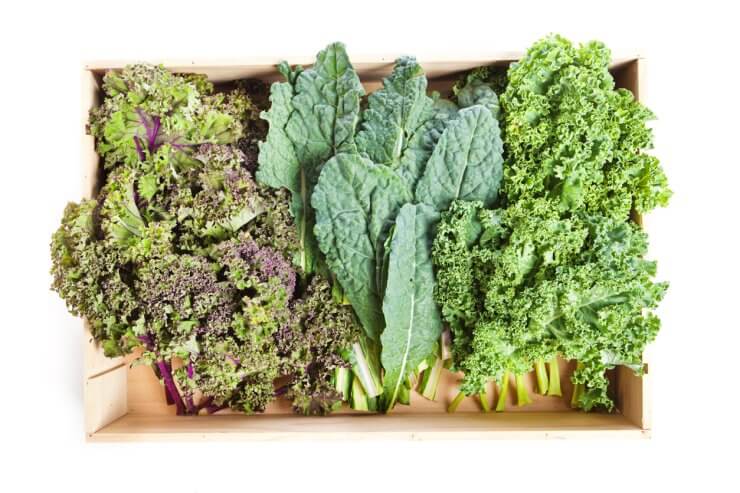
Several varieties of kale in a wooden crate
Kale can be sorted into several broad categories, but thanks to hybridization, not all kales fit neatly into a given category. However, we’re going to break kale into four basic categories—skipping the ornamental group, since our focus here is on food.
The basic categories of kale are:
- Flat: Sometimes also called frill, this type of kale has semi-ragged to oakleaf-shaped leaves.
- Broad: The leaves of this type of kale can grow to as much as a foot across.
- Curly: Probably the kale you most often see at the market, this kale grows densely with tightly curled leaves.
- Lacinato (Dinosaur): Called dinosaur kale because of the pebbled surface of the leaves, Lacinato kale comes in a variety of colors, from green to purple.
All these kale species are members of the Brassica genus, which also includes broccoli, cauliflower, cabbage, and brussels sprouts. You may find that some varieties of kale have a slight cabbage-like flavor to them; in fact, some kales are referred to as cabbage. They’re all just one big happy family! You may hear of other subcategories of kale, but don’t let that distract you. Gardeners and botanists are always tinkering; one instance of cross-pollination, and ta-da! You have another variety.
Some types of kale are more suited to be salad greens, no matter when you pick them; any kale picked when the leaves are young will be fine in salads. Other varieties make stellar additions to soups or stir-fry dishes. Some make excellent chips—a healthy alternative to carb- and fat-laden snack chips.
Which type of kale have you grown? Do you have a preference? Please share your opinion.


 Previous
Previous

